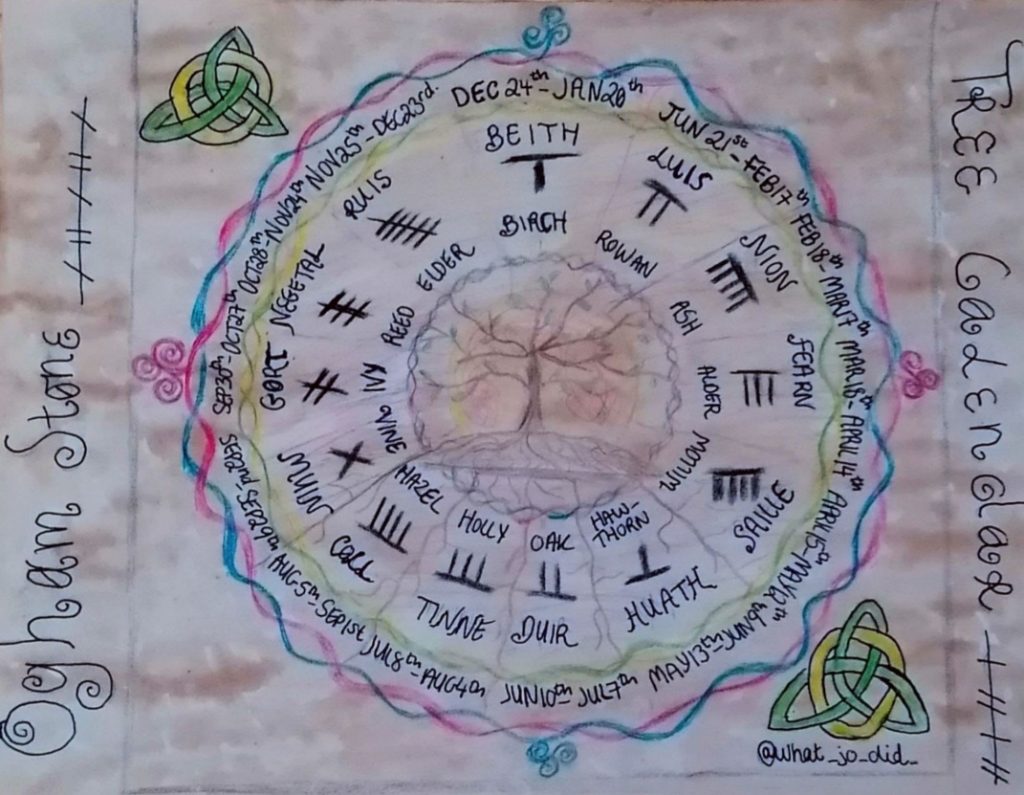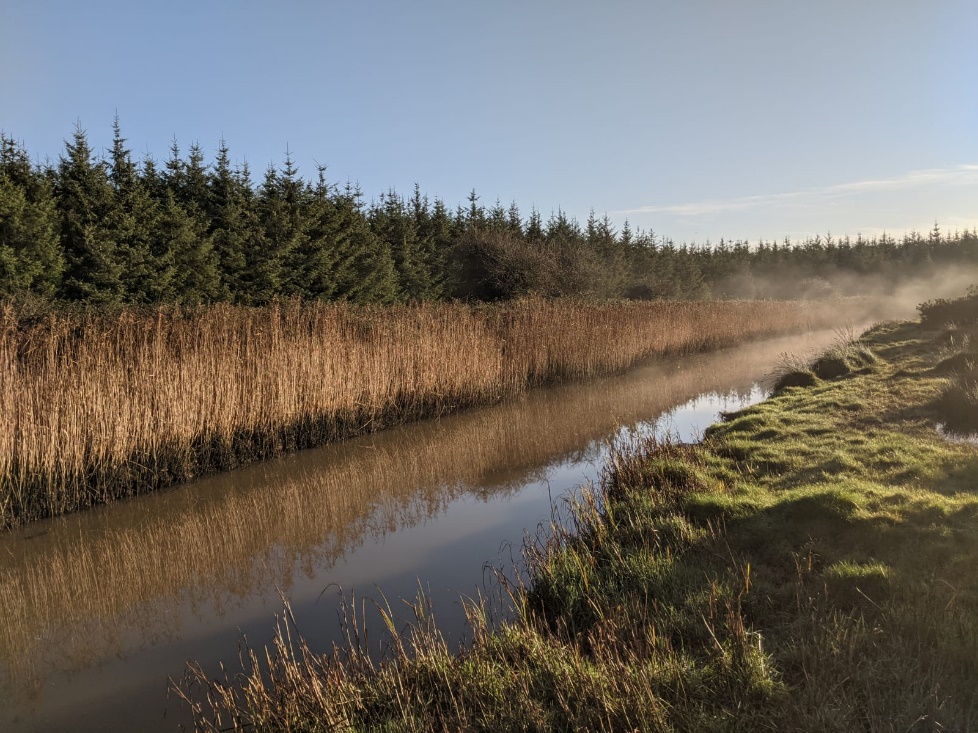We thought it would be fun to explore the Ogham (oh-am) Tree Calendar in our newsletters. The tree calendar has thirteen months. Each month offers its own unique wisdom to us as we make our way through this life trying to live lightly, kindly and communally.

We’re now in the 12th Moon of the calendar, ruled by Ngetal, which celebrates the Reed or Wheat Straw. Long ago, the ‘Old Ones’, the Druids and the Celts revered the outdoor world and believed that one could find spiritual connections with life, the gods and the Earth reflected in nature.
November is a spiritual month, beginning with All Saints’ and All Souls’ Day (November 1st & 2nd) when the Vale to The Underworld is at its thinnest. The eerily beautiful sound of wind passing through water reeds and swaying fields of wheat straw demonstrates how the reed bed whispers and rustles its ancient stories and reminds us to listen to our ancestors.
Reed is a symbol of protection. It can grow up to 2 metres tall and provides shelter for many river birds. In Celtic times, if the people lived in wetlands amongst ponds and streams then reed was a familiar resource. If they lived surrounded by agricultural land, they would have selected wheat. Ngetal, whether reed, rush or wheat, is the only Ogham plant that does not grow as wood (nor have woody stems like ivy, bramble and gorse).
Reed and wheat are admired for their usefulness and practicality. Both are wild grasses and were used for bedding and as loose or woven flooring which released a natural deodorising scent when trodden upon. Today, they continue to be used as roof thatching for quaint cottages as both reed and wheat straw are excellent insulators, particularly useful to provide warmth and shelter during the long, cold and wet months of the year referred to as ‘The Darkside’.
Reeds are prime for cutting in November. They have deep, strong roots that bind the soil together creating stable riverbanks. The roots are sugary and used to be fed to cattle as fodder. Alongside providing protective and nourishing gifts to nature and animals, reeds were a versatile material for people. Their stems and leaves were traditionally woven into mats, baskets, transformed into writing quills and made into whistles. Wheat is the cereal staple of bread flour and provides us with bread, a staple of life. Wheat is also a symbol of fertility, and grains were thrown at weddings, put into the pockets or under the mattress of the bridal couple.

So, what does our revered Reed offer us as learning in our own journey as OFN Ireland?
The resounding quality of Reed is protection and shelter. We wish to emulate the Reed and want OFN Ireland to provide economic protection and stability to small producers. We believe there is strength in numbers and wish to bring people together to work in unison on our platform, creating a resilient local food economy through our solidarity co-operative model. The heart of OFN beats in harmony with Nature and we encourage and support regenerative, Organic and cruelty- free farming practices.
Reed and wheat are abundant in our local environment. Just as our predecessors used the resources they had at hand, we shall connect local people and unite to share our resources, our software and our knowledge. We wish to provide a fertile soil upon which to grow stronger together and build a resilient community bound by shared values.
Ngetal has a strong connection with its ancient past and reminds us to look back, to improve our future by learning from the past and to continue traditional, nature-loving practices.
Reed and Wheat Magic, Charms and Beliefs
- To be sure of seeing the faery-folk on a moonlit night, place seven grains of wheat on a four-leaf clover and place these in a conspicuous place as an offering.
- To be sure that your wheat is absolutely ripe for harvesting, leave cutting until just after the night of that month’s full moon.
- For full, heavy stalks of wheat with large ears at the base of the heads, seeds should be planted at the dark of the moon. (Be careful though – there are sayings too which tell of planting at the full moon for a heavy crop!)
- Before planting, put 5 grains of wheat in an undisturbed corner of the field saying …‘One for the blackbird, one for the crow, one for the mole and two to grow.’
- Place two grains of wheat side by side on a shovel on hot coals or logs, one for each of a pair of lovers. If the grains jump off the shovel, you know that the couple are ready to be ‘bound in matrimony’.
- Find a flowering reed-mace (bull rush) stem with a green top and good luck will be sure to follow.
- Make a whistle from the reed stem and learn to play its eerie music well if you want to summon the faery folk.
♡ ♡ ♡
[Text adapted from Eco Enchantments ‘The Thirteen Trees of the Ogham Moon Calendar ‘]